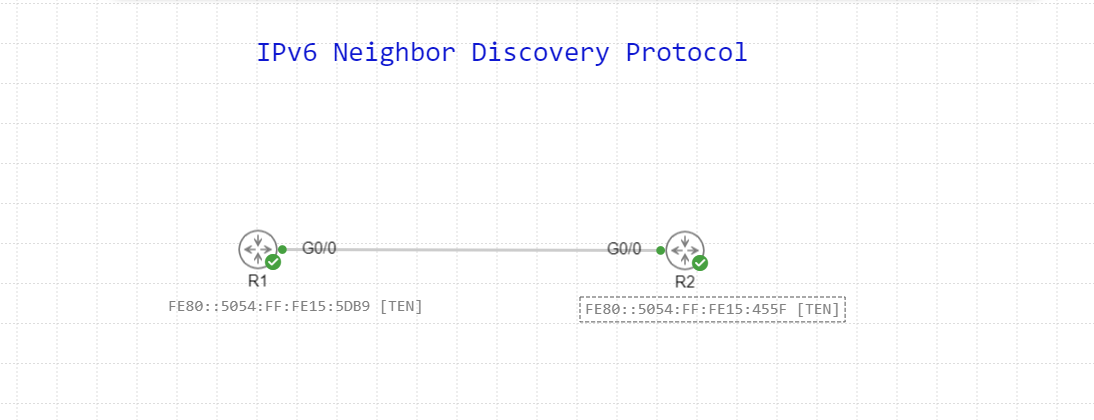I am using Packet tracer and enabled IPv6 as described in the lesson. When I attempt to ping the neighbor using the auto-generated address I get error message below:
Router#ping FE80::201:42FF:FE0D:7101
% Unrecognized host or address or protocol not running.
After playing around with the router config, I realized I wasn’t getting anywhere. So I decided to just configure a global address and attempted pinging again and it worked
Is this unique only to Packet Tracer or is that how it should be configured? I noticed you didn’t have to do that when you demonstrated. I had to do the same on the neighboring router for ping to work.
I enabled debug but I don’t see all the messaged that you demonstrated. I only see the below messages and that’s it. I see the same on the neighbor. Is this also unique to Packet Tracer that I only see few messages?
Router(config-if)#do ping FE80::201:42FF:FE0D:7101
Output Interface: gigabitethernet0/0
Type escape sequence to abort.
Sending 5, 100-byte ICMP Echos to FE80::201:42FF:FE0D:7101, timeout is 2 seconds:
*Mar 1 11:05:48.537: ICMPv6-ND: Sending NS for FE80::201:42FF:FE0D:7101 on GigabitEthernet0/0
*Mar 1 11:05:48.539: ICMPv6-ND: Received NA for FE80::201:42FF:FE0D:7101 on GigabitEthernet0/0 from FE80::201:42FF:FE0D:7101
!!!
Success rate is 100 percent (5/5), round-trip min/avg/max = 0/1/7 ms
Your demonstration shows all the back and forth below messages:
R1#
ICMPv6-ND: DELETE → INCMP: FE80::C002:3FF:FEE4:0
ICMPv6-ND: Sending NS for FE80::C002:3FF:FEE4:0 on FastEthernet0/0
ICMPv6-ND: Received NA for FE80::C002:3FF:FEE4:0 on FastEthernet0/0 from FE80::C002:3FF:FEE4:0
ICMPv6-ND: Neighbour FE80::C002:3FF:FEE4:0 on FastEthernet0/0 : LLA c202.03e4.0000
ICMPv6-ND: INCMP → REACH: FE80::C002:3FF:FEE4:0
ICMPv6-ND: Received NS for FE80::C001:2FF:FE40:0 on FastEthernet0/0 from FE80::C002:3FF:FEE4:0
ICMPv6-ND: Sending NA for FE80::C001:2FF:FE40:0 on FastEthernet0/0
Question 2
During Neighbor solicitation, you mentioned that the destination address is the Neighbor’s Solicited Multicast Address. And that the sender knows about the neighbor address because it was given to it. How was the sender notified of the solicited multicast address? You also mention that the sender computes the neighbor solicited multicast address. Why would it need to compute it if it was already supplied/given to it already?


